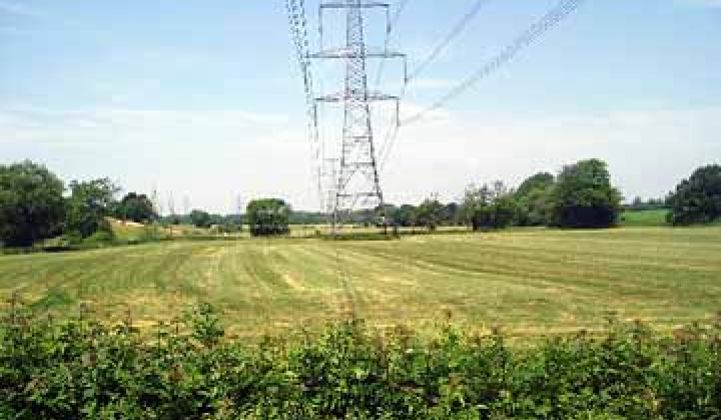Advanced internet technologies, energy management and the smart grid are coming together in an unlikely location: a mid-sized city in the South.
Chattanooga, Tenn.-based utility EPB hit two milestones in the last two weeks of 2010: it completed the final touches on one of the fastest internet pipelines in the world, and it activated the first automated switches on its electricity network. The combination constitutes the backbone for a DOE-funded smart grid network that’s expected to save the utility and area businesses tens of millions of dollars annually.
The utility will go head-to-head with providers such as Comcast to offer its existing customers an ultra-high speed internet connection at a whopping one gigabit per second -- more than 200 times faster than the average U.S. download speed. With this, YouTube uploads go from several minutes to seconds. Even in a worldwide context, it’s impressive -- tech-savvy South Korea is eyeing one-gigabit-per-second service by 2012.
EPB is charging as much as $350 a month for the top-speed connections, which could limit internet service to commercial outfits, but all of its 170,000 electricity customers could benefit from the infrastructure. The network will serve as the conduit for 80 billion data points on electricity use per year that could help the utility run more efficiently, reduce outages, and give customers more control over their monthly electricity expenses.
“Chattanooga is the epicenter of energy technology,” said Harold DePriest, president and CEO of EPB. “One of our biggest jobs is to exploit this technology for the benefit of our community.”
Power outages cost businesses in EPB’s 600-square-mile territory about $100 million a year -- a number that’s expected to decline 40 percent within the next 18 months due to the installation of automated switches. In addition, the utility's planned projects will save $3 million a year through automated meter reading and allow it to roll out demand response services.
The private, city-owned utility secured a $111.5 million stimulus grant from the Department of Energy for the smart grid, raised matching money, and funded the internet infrastructure separately. EPB intends to have the first stage of its smart grid installation complete by August 2012, and by the end of December 2012 it plans to have installed 170,000 smart meters equipped with software and communications equipment by Tantalus Systems.
“Smart grid is a whole lot more than smart meters. It’s about making the electric system intelligent, interactive and self-healing,” DePriest said.
Industrial customers are paying particular attention to the potential benefits of the smart grid, DePriest said. As the economy improves, fuel and electricity prices are expected to increase, which in turn will have a huge impact on the cost of heavy manufacturing. Time-of-use pricing will be one of the services available through the new network. Ideally, this could also help prevent the sort of backlash that PG&E has experienced in California.
“We tell them they can use the smart grid to reduce that rate increase that’s going to be coming,” DePriest said. “We are going down the wrong road as an industry if we say we’re going to cut your electric bill.”
The utility is being aggressive with its technology deployment, particularly when it comes to field infrastructure. In November, EPB began replacing the 1,500 manual switches on its 3,500 circuit miles with intelligent switches that can locate and resolve faults. For comparison, CenterPoint Energy is using a $200 million DOE grant to install 2.2 million smart meters, as well as 550 sensors and automated switches by the end of 2012. ( CenterPoint Energy also conducted a trial with internet service in homes but found that consumers weren’t interested.)
“We’re basically turning our whole network into redundant feeds,” said David Wade, COO of EPB. “As soon as two switches are on the same circuit, they become an automation scheme by themselves.”
S&C Electric is supplying EPB with the switches’ pulse-closing technology, which injects a low energy current pulse into an electric line to determine if a fault has cleared. This saves the utility money by reducing wear and tear on substation transformers and other equipment compared to conventional reclosers, which trip to clear faults and reclose several times to test the line, often creating short-circuit current surges.
Smart grid management technologies from Bell Laboratories will enable EPB to harvest millions of data points on energy usage, helping them to better understand when and where energy is used. The utility has a distribution capacity of 3,000 MW but peak demand of just 1,320 MW, creating inefficiencies in the system, Wade said. EPB loses 3.5 percent to 4 percent of its energy in distribution and transmission, mostly due to transformers that are often larger than necessary for their load. Software can help EPB optimize equipment for actual usage patterns.
EPB’s system is also going to include the option of demand response, but vendors need not apply. While EPB did a pilot with EnerNOC a few years ago, it’s now working with power supplier Tennessee Valley Authority to develop a similar program to be managed internally by EPB, Wade said.
“There’s not a value to our community to send dollars to EnerNOC to turn our lights off,” he said. “It’s more about helping our community save energy -- the more we avoid third parties, the better value we bring to our community.”
Additionally, the utility is experimenting with new technologies, and has been using Bloom Energy’s 100-kw Bloom Box to carry 20 percent of the load of one of its headquarter buildings since June.
The basis of EPB’s smart grid initiative began a decade ago, when the utility found it was restricted from doing automation because it didn’t have communications technology, DePriest said. First, EPB entered the telephone business, followed by internet services seven years ago.
“We found they were complementary. There are huge similarities in high power communications and electric networks,” DePriest said.



